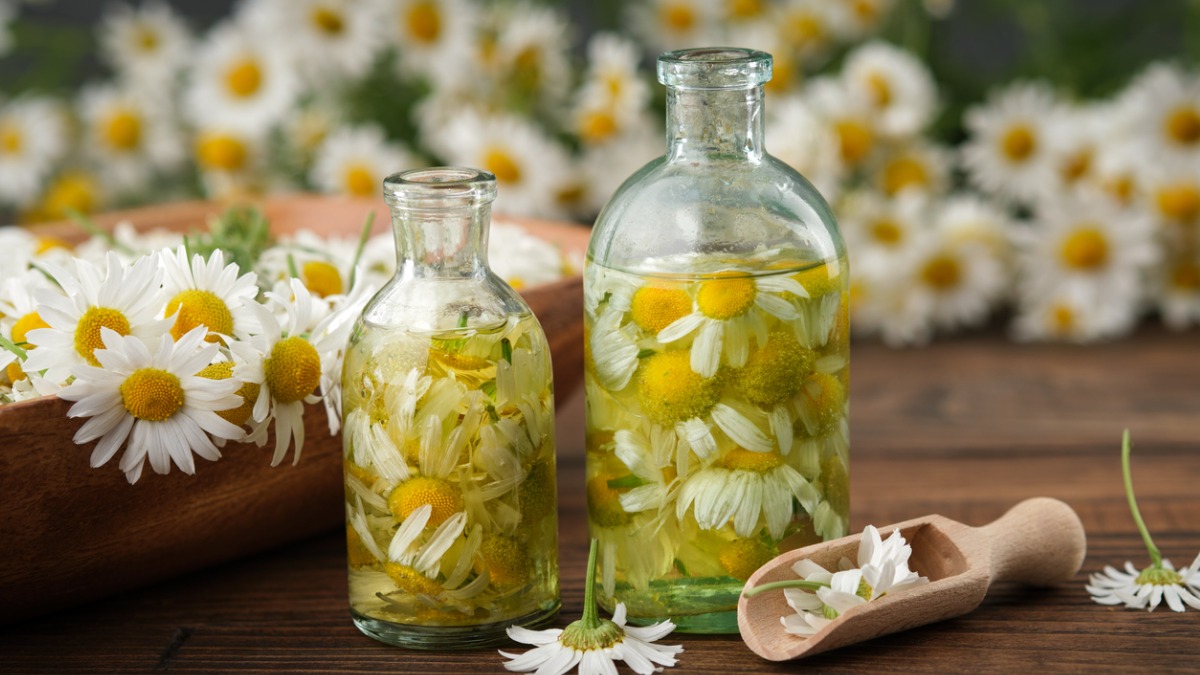Could a herbal remedy traditionally used to treat nappy rash help to prevent a side-effect of cancer therapy? Dr Des Corrigan investigates Aherbal remedy used for centuries and widely known as a treatment for nappy rash looks as if it could prevent one side-effect of chemo- and radiotherapy. The herb in question is Chamomile and its healing properties that favour its use in nappy rash and sore nipples could, according to recent research, be exploited to treat or prevent oral mucositis, a painful and debilitating side-effect of some cancer treatments.
Chamomile is a fairly well-known medicinal herb that has long been in use. Readers will be well aware that there are two types, namely Roman and German. The Roman variety is less popular as a herbal medicine but can be easily grown as a chamomile lawn, reflecting its medieval popularity with the aristocracy, who by walking upon it released its pleasant-smelling essential oil, thus masking any malodours that might offend the nobletariat. The EMA has published a Community Herbal Monograph (CHM) on Roman Chamomile Flowers (Chamaemulum) with an indication as a traditional herbal medicinal product (THMP) for the symptomatic treatment of mild, spasmodic gastrointestinal complaints, including bloating and flatulence.
That indication is similar to one of the five indications agreed by the EMA for German Chamomile (Matricaria), which also is the subject of a CHM. The use in stomach conditions is reflected in the consumption of chamomile as a popular herbal tea. The other indications include the relief of symptoms of common cold; use as adjuvant therapy of irritations of skin and mucosa in the anal and genital region, after serious conditions have been excluded by a medical doctor; and in the treatment of minor inflammations of the skin (sunburn), superficial wounds and small boils (furuncles). The indication of most relevance to cancer patients is as a traditional herbal medicinal product for the treatment of minor ulcers and inflammations of the mouth and throat.
Both chamomiles are members of the daisy family, once referred to by botanists as the Compositae family, but now called the Asteraceae, which explains the contraindication applied to both that refers to hypersensitivity to plants of that family, especially asters and chrysanthemums. Allergic reactions to both chamomiles can occur and serious anaphylactic reactions have been recorded, so patient advice is warranted. Another contraindication involves the use of chamomile products in bath water in cases of open wounds, large skin injuries, acute skin diseases, high fever and severe infections. If preparations such as ointments containing extracts are used to treat sore nipples during breastfeeding, then the nipples should be cleared of Matricaria products prior to feeding to prevent the baby becoming sensitised to allergens from the plant.
These allergens are known to be sesquiterpenes that are responsible for reactions to virtually all plants of the Asteraceae, including other herbs such as feverfew, arnica, marigold and yarrow, as well as the chamomiles. While both chamomiles contain a highly pleasantsmelling essential oil, the chemical composition of the oils is markedly different. That from the Roman type contains mainly low molecular weight esters with only small amounts of terpenes, unlike the German variety, which contains a characteristically blue oil rich in azulenes, mainly chamazulene and bisabolol, both known to be anti-inflammatory. In addition, Matricaria contains a mixture of apigenin-type flavonoid glycosides that are also known to be anti-inflammatory based on in vitro and in vivo tests in animal models of inflammation.
Similar pre-clinical tests demonstrate the wound healing and anti-spasmodic effects, leading the EMA rapporteur to conclude that the data support the plausibility of the traditional uses. Human volunteer studies on the cutaneous use of Matricaria extract cream also support the plausibility of the anti-inflammatory activity. While a number of clinical trials in patients with inflammatory conditions, GIT complaints, generalised anxiety disorder, atopic dermatitis/eczema have been reported, the EMA did not consider that the trials were of a sufficient quality to justify Well-Established Use indications, stating however, that the results did underpin the various traditional indications set out in the CHM.
One of those RCTs published in 1991 involved patients with oral mucositis (OM). This term was first used in 1980 to describe inflammatory ulcerative lesions in the oral mucosa of patients undergoing either chemo- or radiotherapy, or both. The lesions appear from seven-to-10 days after the start of chemo and from the second week on after radiotherapy. Approximately 20-to-35 per cent of chemo patients with solid tumours develop lesions, while 100 per cent of those undergoing radiotherapy in the head or neck areas or chemotherapy prior to stem cell transplantation develop them. These lesions can progress to painful ulcers that can become infected or affect the ability to swallow (dysphagia), leading to malnutrition and resulting in the need for parenteral or enteral feeding that can affect tumour progression and survival time. At present, no one therapy can completely prevent or treat OM. Analgesics, anti-inflammatories and laser photobiomodulation can help, but the search for effective treatment continues.
The results of the meta-analysis showed that the application of topical chamomile was effective in the prevention and/or treatment of OM in four out of the six trials
This is where chamomile comes in. Since the 1991 study, a further six trials in OM patients were published between 1996 and 2017. These were included in a systematic review and meta-analysis published earlier this year in the journal Phytotherapy Research. Five of the studies looked at the effect of topical chamomile (Matricaria) on chemotherapy-induced OM and one study involved radiotherapy patients. A total of 492 cancer patients were enrolled and the effect of chamomile evaluated using a grading system proposed by the WHO. The results of the meta-analysis showed that the application of topical chamomile was effective in the prevention and/or treatment of OM in four out of the six trials. The study in radiotherapy patients gave negative results, possibly because the etiology of radiation-induced OM is different from that induced by chemotherapy.
The authors concluded that the application of topical chamomile as a preventive/therapeutic of chemoinduced OM (oral mucositis) seems to be recommended and pointed to the need to determine useful protocols for using it in the oncology population. It would be naïve to assume that oncologists here might be open to their patients using chamomile, but perhaps one or two knowledgeable hospital pharmacists might be able change their minds. I would like to think so.







